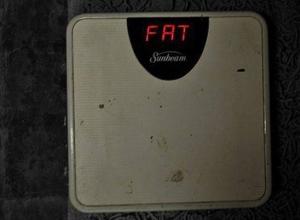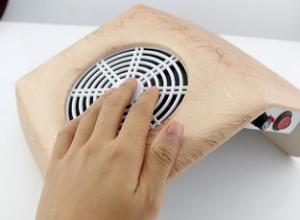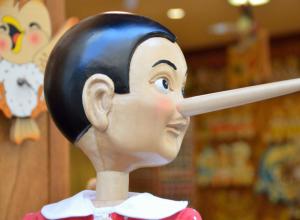Knife for cutting carcasses and skinning. Meat cutting knives
An experienced person will never go hunting without a reliable and proven knife. When choosing, we pay attention to its design, evaluate the steel grade, the strength of the blade, the shape, thickness and sharpening of the blade, and consider the handle. One that will never fail in extreme conditions is an irreplaceable and extremely valuable thing. There are various types, configurations and sizes available on the market today, designed for specific hunting purposes. How to choose a hunting knife that will become a working tool and the pride of its owner for many years?
Types of hunting knives
Various types are used in hunting:
General purpose knives are used to finish off game and protect against attacking animals. By design, they are divided into types: non-folding, folding (with a lock), with removable blades.
Drop point
The blade should not have protrusions and grooves that are intended to cause lacerations, as well as any defects. The blade connects securely and tightly to the handle. The blade has a special sharpening. The handle is equipped with a limiter, which allows the hunter to firmly hold the knife at the moment of impact and ensures safety when using it.
Special purpose knives are used for all kinds of hunting and household needs. These include skinner and drop-point (skinning), which are designed for cutting carcasses, skinning and other hunting purposes. The skinning knife has a wide steel blade with one-sided sharpening. The tip of the blade is beveled and does not coincide with the axis of symmetry.

A drop point with a wide and large blade is used for cutting particularly large game. They are not melee weapons.
“Camp” is a special type of knife that has high strength, sufficient length and weight of the blade for chopping, and at the same time has good cutting qualities. Some hunters use it for cutting game.
Steel for hunting knives
The value of a hunting knife depends on the grade of steel used to make the blade and the quality of its hardening. What should the knife steel be? It must have the necessary hardness and strength to ensure high striking and cutting properties, as well as durability of its operation. Reliable hunting knives are made from carbon, alloy, powder, damask and Damascus steels. We can distinguish steels ХВ5 and Х12МВ.
Diamond alloy carbon steel XB5 is characterized by high hardness (up to 70 HRC) and has excellent cutting properties. It contains chromium and tungsten, which add strength to the metal. But you will have to take very careful care of such a knife, since it can become corroded from water and dampness. Tool stamped steel X12MV has a hardness of up to 60 HRC. This alloy steel contains chromium, which increases its corrosion resistance, molybdenum, which makes the steel more tough, and vanadium, which increases the heat resistance of the metal. With the help of such a blade it is easy to skin carcasses. Blades made of steel grades XB5 and X12MV can go without sharpening for a very long time.
Damask steel has exceptionally high hardness and elasticity, has excellent cutting properties and does not rust. Due to the heterogeneous structure of cast carbon steel, an uneven pattern appears on a damask steel blade. The damask blade is reliable and durable, it can withstand high mechanical and thermal loads.
Damascus steel is not inferior to damask steel in terms of strength, cutting properties and durability. A characteristic pattern appears on the surface of the blade. The Damascus blade, like damask steel, holds a transverse sharpening perfectly. However, when choosing a Damascus blade, you need to understand that it needs to be protected from moisture and dampness, since Damascus is susceptible to corrosion. The Damascus blade should be wiped dry after use and regularly lubricated with special oil.
Knives made of powder steel, such as ELMAX (Sweden), are very popular. The hardness of chrome-molybdenum vanadium stainless steel is about 65 HRC. ELMAX steel is reliably protected from corrosion and has high wear resistance and impact toughness. The knives withstand lateral loads well and hold an edge for a long time. Inexpensive ones are made from popular steel 95X18. This stainless steel, provided it is properly hardened, produces products that, in most respects, are not inferior to the best examples of hunting knives. A foreign analogue of steel grade 95X18 can be considered grade 440B.
Blade shape
When choosing a knife for a hunter, you should pay attention to the blade. What types of blades are there and which one to choose? A clip-point blade with a point at the end and a straight edge is used for finishing game and for economic purposes.

Click point knife
The clip point is quite versatile. Branded knives of this type are quite durable, easy to sharpen, but not strong and sharp enough. The drop point blade is chosen for hunting big game. It has a characteristic butt line, which slowly decreases towards the tip. The drop point knife is distinguished by wide functionality, it stabs well and has high cutting properties. Using this blade, it is convenient to skin a killed animal and cut up a carcass; you can even plan wood with it. A dagger with a straight and double-edged blade is designed for finishing off game. The dagger is dangerous and is not used as a utility knife. The skinner is ideal for skinning and bellying.
The blade with a humpbacked kukri spine is not suitable for hunting, but is used as a hatchet for chopping and cutting wood.
If you prefer to use one knife as a hunter's weapon, for cutting game and for economic activities, choose a blade with a sharp blade end and straight bevels. It is durable, has good cutting properties, can withstand high lateral loads, can be buried without the risk of breaking, and can also be used for chopping.
- For hunting in Russia, the following knives are considered universal:
- length from 230 to 290 mm;
- blade length from 120 to 160 mm;
- blade width from 22 to 32 mm;
- butt thickness from 3 to 5 mm;
- handle length - 110-130 mm;
weight without sheath - 150-300 g.
Blades with straight bevels are convenient for sharpening. Pay attention to the grade of steel; the blade should hold an edge well. The optimal balance is somewhere in the middle, at the level of the guard. The correct balance allows the hunter to work without getting tired for a long time.
Handle

This knife is ideal for use in winter frosts. A hunting knife should be an extension of the hunter’s hand, fit in the hand like a glove, tightly and without slipping with different grips. Therefore, there is no need for indentations for the fingers on the handle. Round handles will turn in your hand. Straight handles, without bends, are considered to be the most durable and comfortable. However, each hunter selects the shape of the handle for himself, based on practical experience. The handles of gift knives are often uncomfortable due to the presence of numerous protrusions. Knives with hollow handles for accessory use are non-functional, impractical and inconvenient.
How not to make a mistake in choosing?
A hunting knife should be of high quality, functional and comfortable. Traditionally high quality and impeccable design distinguish the products of German craftsmen. Among them, multi-purpose ones with blades 250 mm long stand out. The center of gravity with a horn handle is located closer to the tip. They are not cheap, but they serve reliably for many years and do not fail at critical moments. The Germans produce the famous “finks”, analogues of Finnish ones adapted for hunting, as well as knives of the Norwegian type. The traditions of knife production in Sweden are strong, which, along with the use of advanced technologies, has allowed Swedish products to achieve leading global positions. Reliable and ergonomic modern types made of stainless steel and carbon steel enjoy constant trust among hunters. The Russian hunting knife market offers a wide range of domestic and imported products. There are samples designed for any type of hunting. Everyone chooses a hunting knife individually, based on their own practical experience. What should a newbie do? In order not to make a mistake in choosing, it is better for a novice hunter to go shopping with a knowledgeable person.
You need to find the right sharpening and a comfortable sheath for storing it. Correctly sharpen at an angle of 15-30 degrees. It is extremely important and difficult not to change the original angle when sharpening. Craftsmen “finish” the blade on a leather belt, as if polishing the blade. The Scandinavian type sheath has proven itself well. The knife goes almost entirely into the sheath, only part of its handle is visible. The toe of the sheath is designed in such a way that when it rests on the body, it is retracted in the opposite direction. It should hang freely on a leather pendant or on a strong cord. The performance characteristics of the scabbard are impaired by the presence of additional parts. To prevent the blade from becoming corroded, it must be washed well and wiped dry after each use. Wax and gun oil are used to care for the blade. It is recommended to periodically rub the wooden handle with linseed oil.
Did you like it? Share on social networks!
In contact with
Comments
- alexanr
wonderful knives
- Benjamin
Thank you! I hope the lesson will be useful to me.
- Shot
No matter how much we would like, there is no such thing as a universal knife that can equally well carve a wild boar, cut sausage and chop small branches. And we are talking only about technical characteristics, and besides this, there are also individual preferences. If we talk about the only knife in the equipment, I personally would prefer a Yakut type knife.
- Oleg
Comrade is an avid hunter and knife lover. Your article is extremely informative and timely for choosing a knife for a gift.
- Vladimir
I can tell from myself. There are no universal hunting knives. Every hunter (I hate it when they call it HUNTER URRR) chooses a blade the way he likes. One has a damask steel, a silver guard, a handle with carvings made of mammoth tusk, like he FAILED ITSELF! Another blade was spanked from a simple (seemingly) piece of iron, forged on a FORGE, and only with the experience and instinct of a master was spanked. THIS is the knife. Of course not as beautiful. But skinning the carcass, scratching wood chips for the fire, or cutting dowels from nails for the VIKHREVSKY screw is no problem!
- Sergey Prichitsky
I am a fairly experienced hunter, I have been hunting small animals and birds for several years and have already seen a lot of knives, guns and other hunting accessories. I really liked the Russian Knight knives, the first one was given to me by my friend, with whom we go hunting together. It is very strong, I don’t sharpen it often, it retains its sharpness for a long time and looks very attractive in appearance.
- tactec.ru
It seems to me that the most important thing is that the handle is comfortable and the blade is made of good steel
Packaging: branded cardboard blister on a knife blade.
Purpose of the knife:
Designed for cutting up carcasses and skinning. It copes with its tasks wonderfully.
Main advantages:
- All models of knives in the Professional Master series are designed for professional chefs and are suitable for use in the food industry.
- The knife is NSF (National Sanitation Foundation) certified.
- The knives can be washed in the dishwasher.
Handle: Professional Master series knives have an anatomical handle with a rough surface, which allows the knife to fit comfortably in the hand and prevents slipping. The handle is made of high quality polypropylene. The production uses Microban technology, which is added directly to polypropylene and prevents the development and proliferation of bacteria and fungi throughout the life cycle of the knife.
Blade: Steel grade: DIN 1.4110. The blade undergoes 3 stages of heat treatment, which gives the steel incredible hardness - 54/58 units on the Rockwell scale (for comparison, the hardness of diamond is 67 units):
- hardening: heating up to 1000 degrees Celsius;
- cryotreatment: cooling to -80 degrees Celsius;
- hardening: heating to 350 degrees Celsius to increase the elasticity of steel.
Warranty: Lifetime warranty against manufacturing defects.
We offer our customers only original products TM TRAMONTINA, made in BRAZIL.
- The steel is very hard and holds an edge for a long time, but it is also quite fragile. Avoid situations where the knife falls on a hard surface. The blade may break
- The cutting edge of the knife should always be pointed AWAY from your body.
- Never try to catch a falling knife
- After using the knife, always position it securely (with the blade facing away from you)
- Never use knives to open boxes or cans. Knives are intended for food ONLY
- Don't store knives in a drawer
- Wooden or plastic stands are ideal for storing your knives safely.
Attention!
The knives are sharp. Use very carefully. Keep out of reach of children.
How to buy a carcass cutting knife 6" 24606/086 (Tramontina Professional Master):
You can buy a knife by placing an order on the online store website or by calling the numbers in the Contacts section. Our manager will accept the order and arrange delivery. If you need Tramontina knives, we deliver orders throughout Moscow and throughout Russia.
When choosing a hunting knife, you need to understand that hunting knives differ in many ways. The criterion for the average performance of a good knife exists even in international practice. It is generally accepted that a knife is good if it can skin one deer or elk without additional sharpening of the blade. So, what is a hunting knife and how to choose a good knife for hunting.
What is a hunting knife?
By definition, a hunting knife is a short bladed, one- or one-and-a-half-bladed edged weapon used for hunting purposes. Today there are a huge number of different hunting knives in configuration, size, type, purpose, and materials used. Each element of the knife has its own explanation and each instance is the result of an inquisitive search for the most rational solution, based on practical application, experience and traditions. And no matter how unusual the hunting knife may seem in appearance, it has the same details and identical names of the parts.
Types of hunting knives
Various types of blades are used in hunting. For example, general purpose knives are used to finish off game and protect against an attacking animal. By design, they are divided into types: non-folding, folding (with a lock), with removable blades.
Please note that the blade should not have protrusions and grooves that are intended to cause lacerations, as well as any defects. The blade connects securely and tightly to the handle. The blade has a special sharpening. The handle is equipped with a limiter, which allows the hunter to firmly hold the knife at the moment of impact and ensures safety when using it.
Special purpose knives are used for various household needs. These include skinner and drop point (), which are intended for cutting carcasses, skinning and other hunting purposes. The skinning knife has a wide steel blade with one-sided sharpening. The tip of the blade is beveled and does not coincide with the axis of symmetry.
A drop point with a wide and large blade is used for cutting particularly large game. These knives are not edged weapons.
There is also a camp type of knife. “Camp” is a special type of knife that has high strength, sufficient length and weight of the blade for chopping, and at the same time has good cutting qualities. Some hunters use it for cutting game.
Hunting knife - a universal tool
When hunting, there are a huge number of possibilities for using a knife. For example, you need to skin the animal, skin it, gut it, cut the carcass for transportation, separate trophy parts (skull, horns, fangs), and in the camp cut the meat and separate it from the bones, if necessary, prepare the skin for further transportation (remove cartilage from the ears, treat fingers, lips, nose) and so on. Today, most often, the hunter performs all these manipulations with the trophy on his own, so the efficiency of the work, its speed and quality, and, as a bonus, your state of mind depend on the choice of the appropriate form.
Many experts have recognized that the most convenient cutting knife is a knife with a small narrow curved blade and a flying blade. Keep in mind that this will be purely functional and mostly acceptable only for cutting carcasses. Therefore, many hunters, both in the past and today, use it for hunting. Large knives are used to perform camp chores and are also used in chopping when cutting up carcasses. Small ones are used as cutting.
To choose the right knife, consider 4 points:
For finishing off game, a narrow blade similar to a spear is best suited;
For hunting large-hoofed animals, a knife with a wide, but not long blade is suitable;
For skinning, a knife with a curved blade and, if desired, a hook for ripping will be useful;
To cut a carcass, choose a tool with a long blade.
2 parameters of a universal hunting knife
The optimal blade length depends on the individual preferences of the hunter. On average, it should be 10-15 cm to make it comfortable to work with. When choosing, pay attention to:- the thickness of the blade - the thicker it is, the worse the knife cuts. More effort will be required when cutting food;
- blade versatility. It determines the aggressiveness and quality of the cut. It is distinguished by two characteristics: the release from the butt with a thin blade cuts the product effortlessly, leaving an even cut even for thin slices. With a large blade thickness - it breaks;
You need to find the right sharpening and a comfortable sheath to store your . It is correct to sharpen a knife at an angle of 15-30 degrees. It is extremely important and difficult not to change the original angle when sharpening. Craftsmen “finish” the blade on a leather belt, as if polishing the blade.
To prevent the blade from becoming corroded, it must be washed well and wiped dry after each use. Wax and gun oil are used to care for the blade. It is recommended to periodically rub the wooden handle with linseed oil.
A good hunting knife is useful and versatile. However, you need to understand what you want to use this blade for and choose a knife according to your personal requirements. Our consultants are ready to listen to your wishes and answer any questions, as well as help you choose the best knife for hunting.
— Share with friends
It doesn’t matter whether you are the happy owner of a large farm in the countryside or just sometimes like to spend the weekend hunting, you definitely cannot do without a good knife for cutting up carcasses and skinning. After all, the taste of the meat and its shelf life largely depend on how quickly and efficiently the carcass is skinned.
Knives for cutting animal carcasses
A cutting hunting knife is called a “skinner”. It is distinguished by its curved “flying up” shape and the relatively small size of the blade, as well as the presence of a groove on it for draining blood. Thanks to all this, the knife easily copes with any cutting tasks, be it a large animal or a small bird. The blade, made of flexible and durable steel, allows you to bypass bones, separating the skin from the meat as cleanly as possible. In addition, the skinner knife is convenient to use for skinning.

Household knives and saws for cutting carcasses
For cutting pig and cattle carcasses, it is rational to use household knives or saws. Unlike a miniature skinner, such knives are much larger in size: a thick spine and a reliable, durable handle with a recess that prevents fingers from slipping. Most often, the handles of household cutting knives are made of durable plastic that can withstand repeated treatment with boiling water and considerable physical stress. There are also special requirements for the quality of steel for such products, because a knife for cutting carcasses must be both flexible and durable, preventing chipping.

Saws for cutting carcasses can be either manual (hacksaw type) or electric (disc or band). Their purpose is to disassemble the carcass into half-carcasses, including along the ridge, as well as to divide large parts into portioned pieces along with the bones.

Latest site materials
Experience

BMI (body mass index) calculator: calculate for men and women
Ideal weight is an average standard that is calculated based on data from a large number of people. But all people are different. Lifestyle, food culture, nationality and body type - all this influences ideal weight. For example, normal weight people
Health

How to quickly dry nail polish: simple tips How to dry nails in water
Coating your nails with varnish requires a certain amount of drying time: sometimes it takes as much as 10–15 minutes. And at this time the slightest movement or touch can completely ruin the manicure. But there are various ways to dry the varnish much faster, so let’s talk about them
Health

Do you agree with the statement: the only thing worth living for is children?
But no; B completely agree; Children are part of your life, but not all; It all depends on what kind of children. Suppose you arrive
Cooking

How to understand that a man is lying
There is no place for lies in a serious, real relationship. Love can only rest on sincerity, trust and mutual respect. Falseness is always felt, but how can you tell if a man is lying? In order to recognize this, it is enough to be observant. Human
Cosmetology

Coco Chanel Quotes and Sayings
On January 10, 1971, the style icon who turned the fashion world upside down, the creator of the little black dress and the legendary Chanel No. 5 fragrance, the magnificent Coco Chanel, died. She was known not only for her signature accessories and perfumes, but also for her interesting
